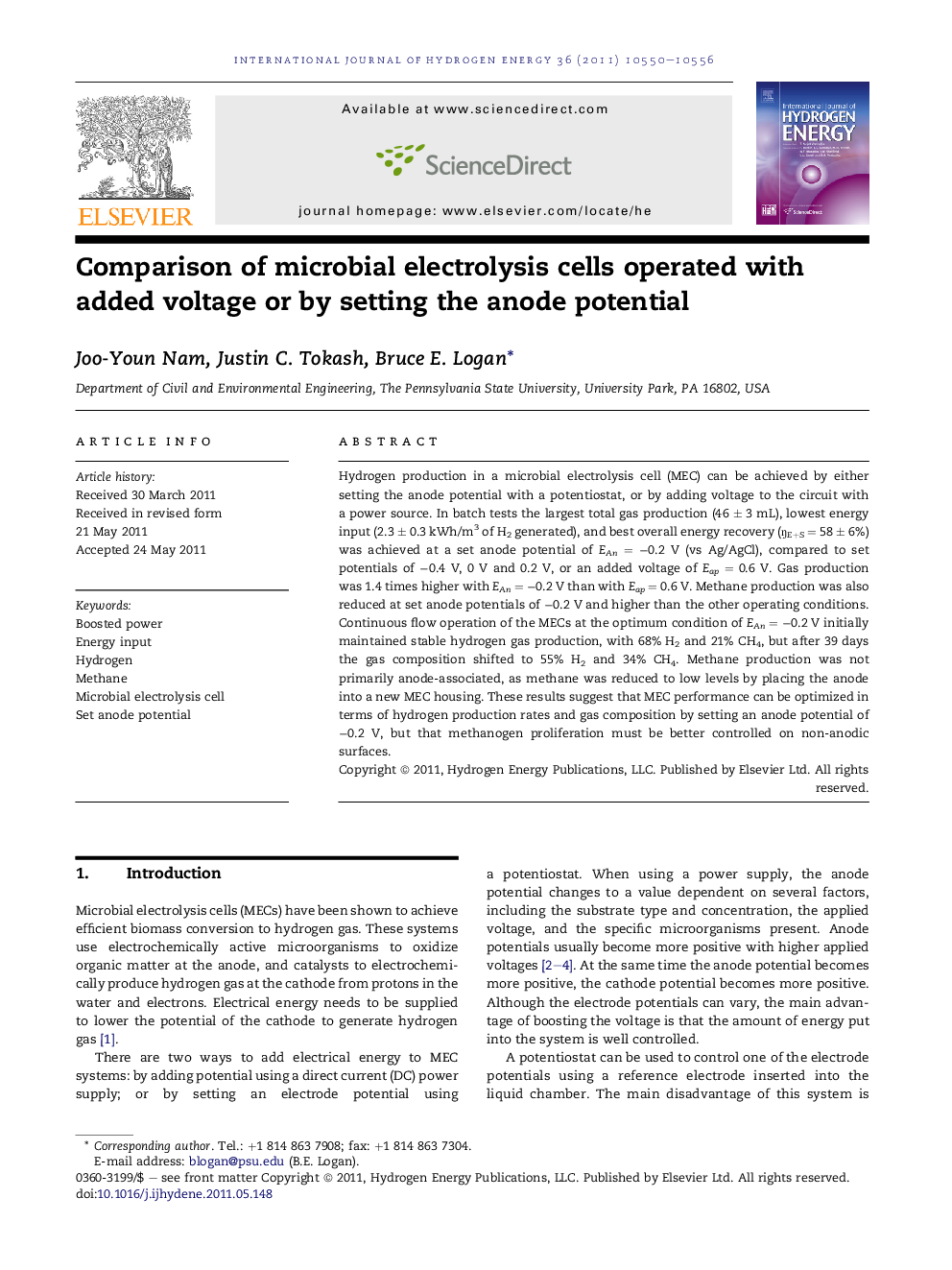| Article ID | Journal | Published Year | Pages | File Type |
|---|---|---|---|---|
| 1277521 | International Journal of Hydrogen Energy | 2011 | 7 Pages |
Hydrogen production in a microbial electrolysis cell (MEC) can be achieved by either setting the anode potential with a potentiostat, or by adding voltage to the circuit with a power source. In batch tests the largest total gas production (46 ± 3 mL), lowest energy input (2.3 ± 0.3 kWh/m3 of H2 generated), and best overall energy recovery (ŋE+S = 58 ± 6%) was achieved at a set anode potential of EAn = −0.2 V (vs Ag/AgCl), compared to set potentials of −0.4 V, 0 V and 0.2 V, or an added voltage of Eap = 0.6 V. Gas production was 1.4 times higher with EAn = −0.2 V than with Eap = 0.6 V. Methane production was also reduced at set anode potentials of −0.2 V and higher than the other operating conditions. Continuous flow operation of the MECs at the optimum condition of EAn = −0.2 V initially maintained stable hydrogen gas production, with 68% H2 and 21% CH4, but after 39 days the gas composition shifted to 55% H2 and 34% CH4. Methane production was not primarily anode-associated, as methane was reduced to low levels by placing the anode into a new MEC housing. These results suggest that MEC performance can be optimized in terms of hydrogen production rates and gas composition by setting an anode potential of −0.2 V, but that methanogen proliferation must be better controlled on non-anodic surfaces.
► We compare MECs operated with added voltage or by setting the anode potential. ► Set anode potential of −0.2 V shows the greatest overall energy recovery. ► Methane is predominant in continuous flow MECs with optimal set anode potential. ► Methane is due to non-anode associated microorganisms in continuous flow MECs.
